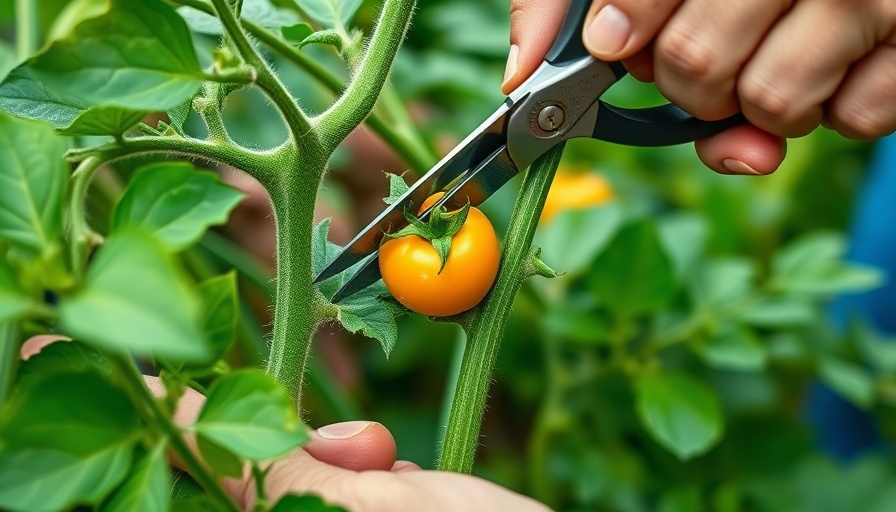
Unlocking the Secrets to Growing Massive Garlic Bulbs
Garlic is not just an essential ingredient in many dishes; for home gardeners, it’s a rewarding crop that can yield substantial harvests with a few proven tricks. As Okanagan gardeners gear up for the next growing season, understanding the science behind these techniques can make all the difference between a mediocre harvest and a bulging bounty.
In 'THE 3 Tricks That Make Garlic Bulbs Way Bigger', the discussion dives into garlic cultivation, exploring key insights that sparked deeper analysis on our end.
Why Removing Garlic Scapes Matters
One of the most significant revelations in garlic cultivation centers around the removal of garlic scapes—those curly green flower stems that sprout early in the season. According to a 2014 study, removing these scapes can increase bulb size by 22 to 35%. This is a substantial gain for both commercial farmers and home gardeners alike. When garlic plants are allowed to invest energy in flowering, less energy is available for bulb development.
Timing is Everything: How and When to Cut Scapes
For optimal results, garlic scapes should be removed when they start to curl but are still firm. Removing them too late not only impacts taste but also makes harvesting more laborious. As Ashley from the video suggests, the best approach is to gently snap off the curls with your hands or use scissors, making it a simple task.
Soil Health: The Foundation of Growing Big Garlic
Healthy soil is the cornerstone of a robust garlic crop. Many backyard gardeners may not test their soil, leading to deficiencies that can stifle growth. Removing scapes appears to provide a more significant advantage in nutrient-deficient soils, emphasizing the importance of regularly enriching your soil with organic matter, such as compost or well-rotted manure, which is high in sulfur.
Watering Wisely: Strategies for Deep Roots
Watering garlic requires a delicate balance. Deep, infrequent watering is ideal, allowing the soil to dry out significantly between watering sessions. Garlic doesn’t like overly moist conditions, which can lead to poor bulb quality. By dedicating a specific garden bed for garlic, you can maintain optimal moisture levels, thus contributing to larger bulbs.
Harvesting at the Right Time: A Critical Step
Timing your garlic harvest plays an essential role in determining bulb size. For the best results, you want to wait until you have around three to five leaves remaining before pulling up the garlic bulbs. This allows the plant to store the maximum amount of energy, leading to noticeably larger bulbs.
Additional Tips for Bigger Garlic Harvests
Besides removing scapes, ensure that you’re following these garlic-growing tips:
- Choose Quality Seed: Opt for high-quality, disease-free garlic bulbs to plant.
- Crop Rotation: Rotate garlic plants each year to prevent soil borne diseases and pests.
- Pest Management: Be observant of pests. Protective measures can save your crop from damage.
Conclusion: A Path to Bountiful Garlic Harvests
By implementing these science-backed strategies—removing garlic scapes, watering appropriately, and knowing when to harvest—you can significantly increase your garlic yields. As Okanagan gardeners, your local climate and soil will reward the extra efforts you invest. So, roll up your sleeves and get ready for bigger, tastier garlic bulbs next season!
If you have your tips or insights to share, or if you’d like more science-based gardening advice, consider subscribing for more!
 Add Row
Add Row  Add
Add 




Write A Comment